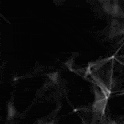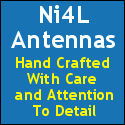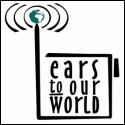Archive for the ‘dstar’ Category
 Everything Ham radio podcast Ep 93 – NASA On The Air(NOTA)
Everything Ham radio podcast Ep 93 – NASA On The Air(NOTA)
I’m sure that you have heard of NPOTA, National Parks On The Air, and SOTA, Summits On The Air, and probably even POTA, Parks On The Air, The US program for the World Wide Flora and Fauna, but have you heard of the latest event that starts on Sunday, Dec 11, 2017?
Starting at 0000 UTC time on December 11, 2017 the new year long event celebrating multiple anniversaries for the NASA program will start. It is called NOTA or NASA On The Air.
With several NASA clubs doing several special event stations of the coming year, they decided to make a year long event where you, as the end user, can contact the stations to earn points through the year. You can even gets points during other events like Winter Field Day, the ARRL Field Day and others.
Losten to my latest podcast episode where I talk with Rob Suggs about it:
 What is an Amateur Radio Repeater and How Do They Work?
What is an Amateur Radio Repeater and How Do They Work?
What is an amateur radio repeater and how do they work?
In this video, with a non-amateur-radio viewer in mind, I chat about the very basic concepts of a repeater. This is a vlog (video blog) entry on my video channel, and it is shot in a relaxed, “ride along with me” format. Feel free to share this short overview with those who might be interested in our hobby. There are more of these sorts of ridealongs coming.
Thank you for watching, and for sharing…
..
 ETH075 – RFinder
ETH075 – RFinder
If you are anything like me you have used those little repeater  directories and strained your eyes in the process. I use to hate trying to find a repeater to use while I was on a trip. Most of the time, while I was on a trip, the town that I was in didn’t have any repeaters in it, but the next town over did. Maybe it was two towns over, or the third of fourth town that I look at in the directory. Either way, it was a pain in the…well you know.
directories and strained your eyes in the process. I use to hate trying to find a repeater to use while I was on a trip. Most of the time, while I was on a trip, the town that I was in didn’t have any repeaters in it, but the next town over did. Maybe it was two towns over, or the third of fourth town that I look at in the directory. Either way, it was a pain in the…well you know.
Bob had the same thinking that I did all those years ago, but he acted on it. He went and digitized all the repeater data that was available and made it into an Android app. It is now available to IPhone, Android and on the web for just a small fee.
RFinder is the official repeater directory of Canada, the United Kingdom as well as 13 other countries. This year the ARRL partnered with RFinder to print the 2017 ARRL repeater directory. This years directory has 10,000 more listings and is the first time that the ARRL has crowd sourced the repeater information. The data that RFinder uses comes from many different places including Repeater societies, club websites and directly from repeater owners.
For more information about RFinder, hear it from Bob himself in the latest episode of the Everything Ham Radio Podcast at http://www.everythinghamradio.com/podcast/75
 ETH074 – 13 Colonies Special Event with Bob Josuweit, WA3PZO
ETH074 – 13 Colonies Special Event with Bob Josuweit, WA3PZO
 It is hard to believe that June is almost over and Independence day will be here in less that ten days! It is time for that long weekend off, where families and friends get together to have a bar-b-que and “party” together. While celebrating the day is good, celebrating the week is even better, and that is exactly what we talk about in this interview.
It is hard to believe that June is almost over and Independence day will be here in less that ten days! It is time for that long weekend off, where families and friends get together to have a bar-b-que and “party” together. While celebrating the day is good, celebrating the week is even better, and that is exactly what we talk about in this interview.
This special event started back in 2009 and has grown every year since. Operators from each of the original 13 colonies will be on the air from Jul 1 through Jul 7 at different times. You can be part of this special event by making contact with any or all of the 13 colony stations or the two bonus stations.
Check out the show notes and listen to the episode for more information
 DStar and Digital Networks
DStar and Digital Networks
If your pockets are deep and your mind open then DStar offers some useful opportunities to connect to other amateurs via a very robust network. I on the other hand am a cheapskate with very shallow pockets and a healthy distrust of proprietary stuff. So how does one get involved in a changing view of amateur radio? There seem to be a few options that are more that dongles for your PC.
FreeDV is one way. It promises a way of connecting up your existing analogue radio to the digital networks. A very brief look at it this afternoon gave the impression that if there was a signal to be heard (On 14.236Mhz) then it would decode it and display the QSO on the screen. Trouble is there where no HF signals.
DV3000 bridge is another way to connect your radio to and existing set up (Analogue VHF)
Jonathan Naylor, G4KLX also has spawned a range of hardware and software that makes use of digital voice that appears through the link.
All these little bits of knowledge came from an a hour or so when the kids were at their quietest (which is not often) so there’s clearly a bit to learn. I hadn’t paid much attention to DStar or its friends as at face value it was asking me to buy more stuff at £300+ . That was a turn off. But if there are options at a lower price point then I could be persuaded to join in the digital voice game.
 Five Ways IRLP is Better Than D-STAR
Five Ways IRLP is Better Than D-STAR
The history of the Internet Radio Linking Project (IRLP) goes all the way back to the last century when David Cameron, VE7LTD created it. His was an effort to link repeater systems across Canada using the Internet. Since then, the system has evolved, matured and grown. And it’s still growing. Today, there are nearly 1700 active nodes around the globe.
I built an IRLP node (4212) way back in 2003 and have operated it as a simplex UHF node in my home ever since. With it and my handheld transceiver, I’m only ever just a few touch-tone presses from linking my system to repeaters and other simplex nodes around the planet.
These days, much attention is heaped on D-STAR, the growing digital network promoted by ICOM. Digital systems have some advantages that might be very useful going forward in the amateur service. I use and support the continued deployment of D-STAR, but if you’re thinking about diving into linked systems, I can think of five good reasons why IRLP should be considered before taking the digital plunge:
- IRLP uses standard FM. There are few radio amateurs who don’t already have a standard two meter or 440 transceiver at their disposal. D-STAR equipment is generally more expensive, and it obsoletes perfectly good hardware.
- D-STAR systems usually require all new repeater hardware. IRLP can make use of existing, standard FM repeater installations with the addition of some simple equipment. Clubs don’t have to chuck their previous investment in their repeater system to deploy IRLP.
- If you can push-to-talk and press a few touch-tone keys, you can link your local IRLP system to others. D-STAR equipment is much more complex to use. Programming software is generally employed to make the task of setting the new D-STAR radio up a bit easier but despite ICOM’s best efforts to make it simple, it remains a steep learning curve.
- The D-STAR system can be accessed directly via the Internet via the DV-Dongle. While this could be seen as an advantage, radio purists will blanch at the notion of operators “getting on the air” directly via the Internet. Sure, the Internet provides the backbone for IRLP, but it’s a system design requirement that real radios are required on both ends of an IRLP link. That’s why VE7LTD used the “keeping the radio in ham radio” motto.
- And then there’s the audio. Listening to an FM transmission from a properly adjusted ham radio repeater is a joy. D-STAR audio on the other hand is compressed, tinny-sounding. It’s not a showstopper and most D-STAR fans will tell you they have grown to prefer the pinched audio. Still, the first impression of many is that the audio is painfully compressed.
I might also add that IRLP is available over a wider geographic region than D-STAR. That’s probably due to its ease of deployment, lower investment, and the five year head start it has on digital systems.
Linked VHF/UHF repeater systems aren’t for everyone, but I see plenty of utility in amateur radio having its own “intercom” system that provides reliable, stable, enjoyable communications — when the Internet is up and all systems are “go”.
 On the Road With D-STAR (part 2)
On the Road With D-STAR (part 2)
Part 2 of 2
If you purchase the DHAP with the Raspberry Pi, it includes a factory image of the OS and software. Configuration is easy enough. The DVAP software is set to auto-boot so you need only configure it once. If you connect the device to a wired network connection the Pi will boot up and obtain a connection. If you want to use the device with Wi-Fi, then you have to launch the WiFi configuration tool and set up the connection.
This is only slightly tricky because it would be handy to plug in a keyboard, mouse, and the network dongle — three USB connections while the Pi only offers two. A USB hub handles the multiple connections and you’re underway. After setting it all up once, there’s no need for reconfiguration as it all just boots up and obtains a network connection without the need for additional interface.
In other words, connection to a monitor, mouse and keyboard is only required for the initial configuration. After that, the DHAP can be operated “headless”.
Unless of course you’re thinking of taking this on the road with you and would like to connect it to a hotel’s Wi-Fi. Then you’re going to need to carry the input peripherals and a monitor, or use the TV in your hotel room if that’s possible.
This is all much more than I like to carry on out of town trips which is why I tether the DHAP to my cellphone. Carrying Wi-Fi in my pocket simplifies things considerably though this brings me to a tip I’d like to pass along when using it this way.
Wi-Fi and Tethering
If you set your home Wi-Fi and your tethered connection to have the same SSID, password, and encryption method, then there is never a need to reconfigure the Raspberry Pi. One of my home wireless networks (WPA PSK2) is called ‘GUEST’ and the password is ‘lemonade’ and I’ve made those settings identical on my phone.
When I’m away from home, I tether to my phone. When I’m home, the Pi auto connects to my home Wi-Fi. Simple. Easy. Clean.
It takes about 15-20 seconds for the Pi to boot up and another 20-30 seconds for the networking to kick-in, negotiate a connection, and begin working. When you power up the DHAP, give yourself a full minute before trying to connect to it with your radio.
Powering the DHAP
The DHAP comes with a brick charger that has an LED indicator. When it’s red, the batteries are charging and when it’s green the charge cycle is complete. Silly me. I plugged it in and started using it right away. The charger went through the cycle, the LED turned green and the voltage began to drop. Though I wasn’t paying attention and several hours later my D-STAR connection was dead. When I checked on the DHAP the voltage display showed 2.2 volts — not enough to keep the Pi or the DVAP alive.
This seemed odd. The battery voltage was low but the charger LED was green. There was no charging going on for some reason and I thought I had a defective unit.
Then I discovered that the charger is fairly “dumb”. It provides one charge cycle then stops. Removing power resets it for the next charge. This works well if you charge the DHAP, then unhook it and take it in the field. If, on the other hand, you want it to just sit on the shelf at home and provide a hot-spot, you should provide power via the USB Power socket on the front panel.
This bypasses the batteries altogether and directly powers the Raspberry Pi and the DVAP. By the way, *don’t turn the unit on in this mode* — and the voltage display will show the power being supplied via a USB power supply — probably something a little less than 5 volts.
A one amp USB power supply should do the trick nicely.
Odds and Ends
It makes sense to get things working with your DVAP connected to your desktop (or laptop) computer before installing it in the DHAP. It will operate exactly the same once it’s tucked away in the enclosure.
There is a small slot in the top of the DHAP that permits you to see the activity LED’s on the DVAP. You will find this quite useful.
The tiny antenna on the DVAP works well enough but it can be replaced with a more efficient “ducky” style antenna. The DHAP comes equipped with a built-in cable that can “remote” the antenna connection to the back panel. Don’t be tempted to try and interface the DVAP to a full-sized, outdoor antenna. Internet Labs has reported hardware failures that they attribute to doing just that.
Have Fun
D-STAR is not worth the bits it’s built upon if you don’t enjoy it. If you’re considering joining the growing crowd in this unique mode of operation let me first ask you one simple question: do you enjoy repeater operation?
Because at its core, that’s what D-STAR is. A global collection of repeaters and individual users who have the ability to communicate with each other using this digital technology. If you’re answer is “YES” and you enjoy rapid learning, then you will no doubt enjoy digging in and exploring this evolving mode of operation.
But if you’re answer is “NO”, well, then this facet of amateur radio is probably not for you. Don’t waste your time — or your treasure. Move on and find something you really enjoy. After all, amateur radio is a hobby with endless things to do, people to meet, and fun to be had.
Filed under: Ham Radio Tagged: dhap, dstar, dvap, hr, icom, id51a












